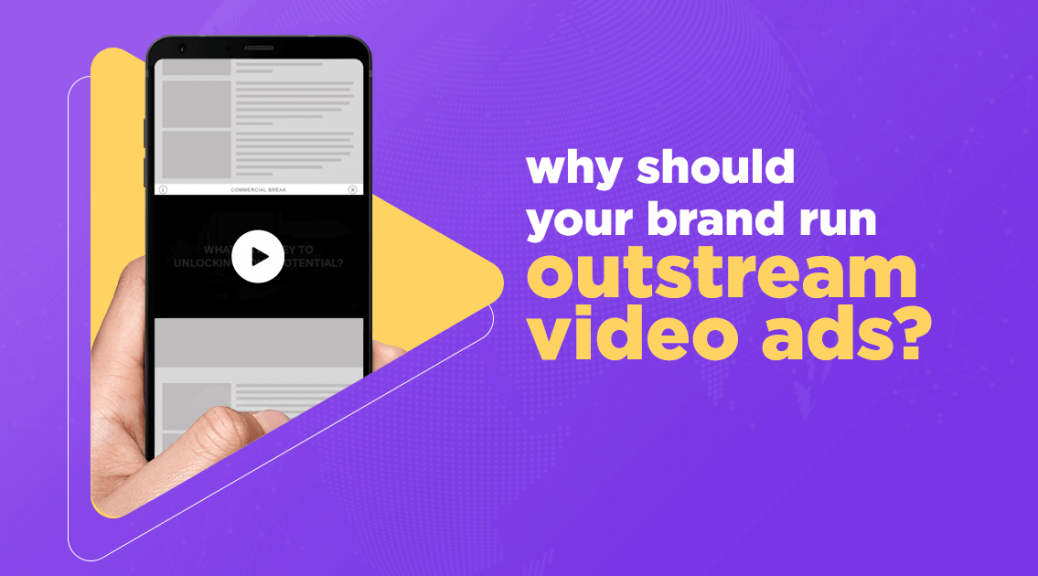
Why Should Your Brand Run Outstream Video Ads?
At this point, we are past discussing whether mobile video ads are the future of marketing or not. Given the exceedingly high video consumption on smartphones – 2.33 billion global viewers[1] to be precise, the talk is now about which mobile-first video ad format works best.
And, one format is garnering all possible accolades within this domain, namely – the outstream video ad. Not only is this format more immersive than the usual pre-roll, mid-roll, and instream ads, it operates as a standalone entity. This means that you don’t need to embed – these ads show up in a non-video environment.
Moreover, with platforms or apps that let you develop and deploy outstream video ads, brands no more need to rely on uploading and sharing videos through YouTube or OTT platforms. Brands can simply create an independent outstream video ad and service their potential customers with personalized information. The brand can run these ads across top content websites and apps.
Before delving any deeper into why your brand can’t justify its digital marketing campaign without outstream video ads anymore, let’s succinctly understand how it works.
Outstream Video Ads – How do they work?
A more native way of viewing ads on smartphones, outstream video advertisements are screened outside of YouTube and OTT platforms. These ads don’t require viewers to push play or pause, and brands can place them anywhere within a content piece, such as articles, blogs, etc.
You have most likely come across these videos while scrolling through your social media feed. At the time of scrolling, this ad starts playing automatically on mute. You can unmute it by tapping on the ad. If the ad is not of interest, you can continue scrolling down.
Outstream video ads only start playing when they are in full view of the surfer. Unlike in-stream ads played before or during a video and make for mandatory viewing, surfers consume outstream video ads on demand. Ads are on mute to begin with. Users can unmute ads. They can simply scroll down too if they don’t want to view this type of ad.
Why Should Your Brand Leverage Outstream Video Ads?
Why not! Already 77% of marketing agencies worldwide admit that outstream video ads are critical to their ad portfolio[2]. But let’s look beyond numbers for a minute. Here is the rationale why more and more brands have started to rely on this mobile-first ad format.
Achieve Incremental Reach by Running Contextual Outstream Video Ads
With outstream adverts, you don’t have to rely on other publishers’ video content to embed your ad, so you can place them on any webpage that has non-video content.
Since outstream video ads are free from the shackles of a host video, you can embed them at the right place within the right content. Through this feature, you can reach out to a more extensive target base on web pages that are contextually most relevant to you; and where your outstream video ads blend with the content rather than sticking out like a sore thumb.
You can choose to place outstream video ads in the following manner:
- In-place – Here an outstream video ad is placed on a web page purely to show an ad.
- In-banner – Often placed on top of a webpage or on its side or app. These ads stand away from the textual part of a web page.
- In-text – Publishers place these ads within the text and users can view them or move past them during scrolling.
Register High Click-Through Rates (CTRs)
When the outstream video format was newer, publishers could only guess its efficacy. Today, data proves it! Studies clearly show that the CTRs for outstream video ads are 2.5% higher than pre-roll, mid-roll, and in-stream ads[3].
One of the reasons behind this statistic is that outstream adverts truly integrate within the content rather than acting as a barrier to watching the main content. When placed on the right landing pages with suitable CTAs, they extend genuine value to the viewer and boost your CTRs and subsequent conversions.
In Conclusion
Today, you can’t be a forward-looking digital marketer without supplementing your ad campaigns with outstream video ads. Remember, this new mobile-first ad format is touted to be one of the stickiest, as the viewer remains in control of consuming advertisements.
Countless biggies of the media world like Conde Nast, The Times of India, The New York Times and many others have already adopted this ad format. What’s stopping you?